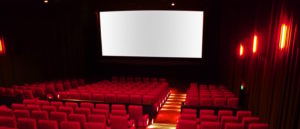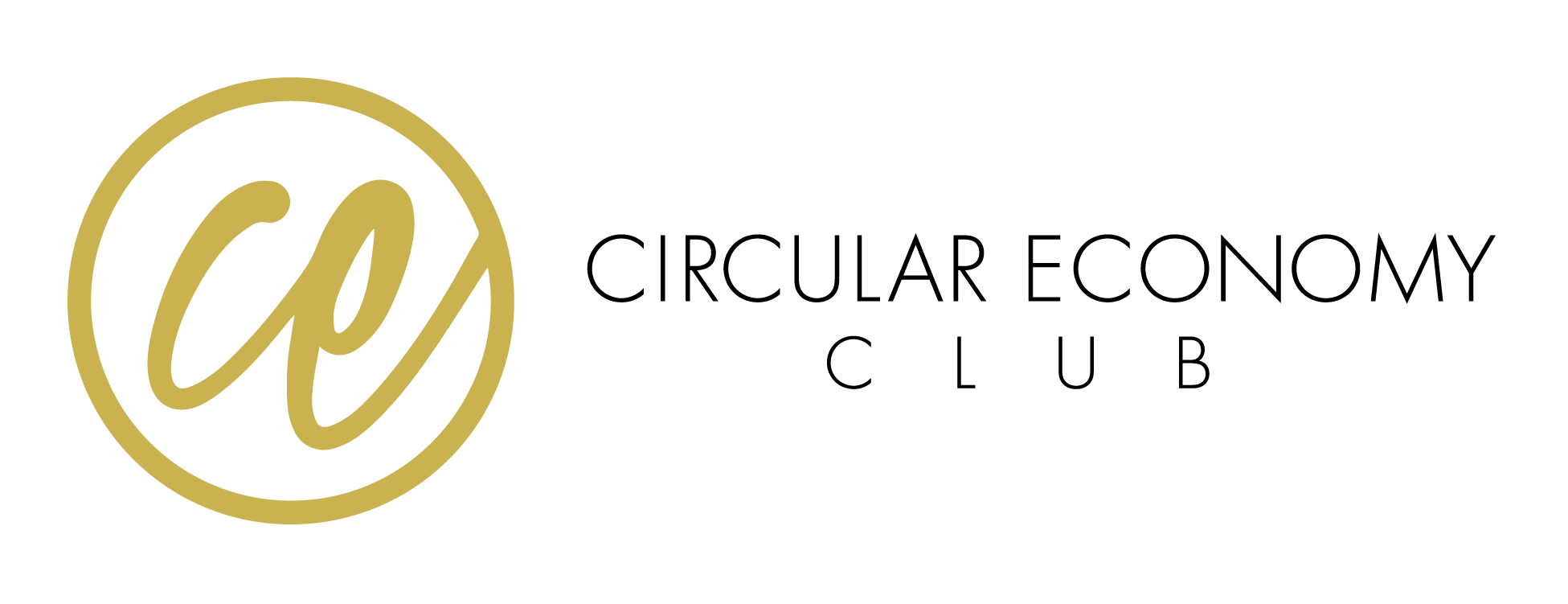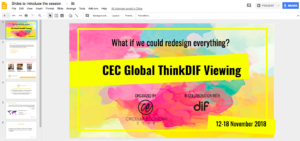How to run a ThinkDIF Viewing session
There are 2 objectives for your Viewing:
- Bring together the circular economy community in your city; and
- Spur the discussion around the ThinkDIF videos you played and feed back any questions back to the online festival.
Your CEC Viewing session should be minimum a 3-hour session, with the following structure:
- 25 min – Registration and welcome drinks
- 10 min – Introduce yourself, CEC, the Viewing and explain how the session will work
- 90 min – Screen the DIF videos you have planned to play
- 30 min – Open discussion and feed back questions into the online platform
- 30 min – Networking time
1. Registration and welcome drinks – for people to get to know each other
It is important to welcome the team members with a warm smile and enthusiasm. We advise picking a team member who has strong people skills. We have put together a sample template to register attendees, please make sure to record who has attended so we can have the record of this and you can send them a thank you note following the event. Usually, free events, have a 50% attendance rate, take this into consideration when sending invites and tracking accepted invites. For sessions that can hold 30 attendees, we advise having at least 60 people registered to attend.
You can use name badges, with big print, to help your attendees easily identify each other. Including job titles on name badges also works well, but try and get creative and maybe instead include information such as: “Talk to me about X topic” to stimulate conversations and interactions.
Welcome your attendees into a lobby or lounge area. Provide some water (infused with lemon), juices or non-alcoholic drinks, etc. Your role as an organiser is to introduce people to each other and make everyone feel inclusive.
In the entrance of your event or/and during the welcome drinks, project the holding slide. Click on the image below to download the holding slide and add the name of your city to replace the text in brackets.
2. Introduce yourself, CEC, the CEC Global Viewing and your session schedule
After the welcome drinks, allow 5 minutes to walk your attendees to the room where the session will take place. The images below are examples of a room set up. You will need:
- A screen for the videos
- Enough space for around 20-40 people to sit either group style or cinema style

During the introduction, you will use the slides below, to:
- Introduce the session, yourself and your team, hosts and sponsors, introduce CEC, the DIF Global viewing; and
- Explain to the groups how to save their questions for the end of each of the videos played
Click on the image to download the session slides, edit as per the instructions below and save on your computer.
- Download the slides
- On the first slide, add the name of your city where it says (INPUT YOUR CITY NAME)
- Read the footnotes of every slide, they can serve as a guide to your speech on the day
- Feel free to translate into the native language of your city, but keep CEC format and branding
3. Viewings of videos
- DIF-on-Airs and DIF Studio are almost all 30 or 45 minutes long. The end time is on those sessions.
- For DIF Films and Podcasts, the lengths vary, generally, they last no more than 15 minutes for each film.
– Narratives around our Key Topics: Cities in Transition, Materials & Design and People in the Economy (https://www.thinkdif.co/topics)
– DIF Speakers (https://www.thinkdif.co/speakers)
– Best of the DIF 2017 (https://www.thinkdif.co/playlists/best-of-the-dif-2017)
4. Session wrap-up
Draw the groups’ attention back to the screen using the slides for the wrap-up, and ask all attendees:
- What was the one thing you gained from this session?
- What type of sessions would you like to have in the future? (for example panel discussions on circular design, workshops on business models, etc) and make sure to note down all suggestions.
- Aim to get 3 or 4 answers from all attendees collectively rather than for each person.
5. Networking time after the event
Once you finish wrapping up, do the following:
- Record 2-3 short (20 second) videos of different attendees with their 2 key learnings from the day, take note of their name, title, organization or just the sector they come from (public, private, NGO, etc);
- Say that you will be sending CEC the photos and videos of the session. They will be posted on the CEC website and Facebook page and group;
- Thank everyone for attending, and your team for their support and efforts;
- Invite everyone to have a drink/bite at the after-session room and go with them; and
- Help people make connections. You are the facilitator and the face of the event, so enjoy!
6. How to send the support team at CEC your photos
After the session, Viewing Organizers will send CEC:
- Emails of all attendees using sample template, so CEC can send them information on the upcoming CEC global initiatives;
- Send your short videos with the key learnings from your session via WeTransfer.com to sara@circulareconomyclub.com
- Minimum 10 Photos of the session, to be upload onto the CEC website and Facebook; and
Top tips
- Be prepared to answer questions about CEC. People will ask you things such as:
- When did CEC start? 2012 as a website, 2014 running events
- Where is CEC headquartered? London, UK
- How many members does CEC have? over 4,500 in over 140 countries
- Is CEC a not-for-profit? Yes
- Who runs CEC? Team
- What will CEC do with the photos after the session? add them to the CEC website and Facebook page
- Use the ‘About Us‘ to prepare for such questions and write to sara@CircularEconomyClub.com for any questions ahead of your event.
2. Run the session with your team before the event.
3. Be yourself, enjoy the experience and be proud of you and your team. You will be rewarded for your great work, not only through increased visibility by being the CEC face in your city and worldwide, but also through future collaborations that are the result of your ambitions and proactive nature in hosting this event.
Return to DIF Viewing Toolkit homepage.




